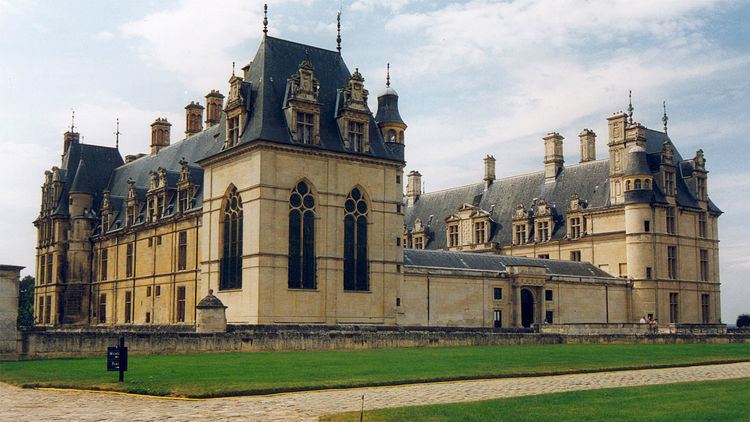Type Château Country France Phone +33 1 34 38 38 50 Architect Jean Bullant | Town or city Écouen Opened 1550 Architectural style French Renaissance | |
 | ||
Address Rue Jean Bullant, 95440 Écouen, France Hours Open today · 9:30AM–12:45PM, 2–5:15PMFriday9:30AM–12:45PM, 2–5:15PMSaturday9:30AM–12:45PM, 2–5:15PMSunday9:30AM–12:45PM, 2–5:15PMMonday9:30AM–12:45PM, 2–5:15PMTuesdayClosedWednesday9:30AM–12:45PM, 2–5:15PMThursday9:30AM–12:45PM, 2–5:15PM Similar Musée national du Moyen Âge, Château de Chantilly, Palace of Fontainebleau, Château de Rambouillet, Château de Malmaison Profiles | ||
Suivez le guide le ch teau d couen un symbole de la renaissance fran aise
The Château d'Écouen is a historic château in the city of Écouen, north of Paris, France, which today houses the Musée national de la Renaissance (National Museum of the Renaissance).
Contents
- Suivez le guide le ch teau d couen un symbole de la renaissance fran aise
- Ch teau d couen
- History
- Museum of the Renaissance
- References
The château was built between 1538 and 1550 by the architect Jean Bullant for Anne de Montmorency, who was made Connétable de France in 1538.
Ch teau d couen
History
Anne de Montmorency had inherited the château in 1515, and his building campaigns were informed by his first-hand experience in overseeing royal works at Saint-Germain-en-Laye and Fontainebleau.
Jean Bullant is likely to have been the architect, for he was commissioned to design the Grand Constable's tomb, but it has also been suggested that Pierre Tâcheron had a hand in the château's design. The colossal order is rare in French architecture before Bullant; his characteristic use of it might be its first appearance in France here, on the pavilion on the court side.
Anne de Montmorency was a major patron of the arts in France, and a protector of artists: his chapel was decorated with sculptures by Jean Goujon, and Jean Bullant, Barthélemy Prieur, Bernard Palissy. Some of the Androuet du Cerceau family found protection and work at Écouen. Unhappily, no building accounts survive, so the precise sequence of the construction cannot be closely followed; panels of grisaille stained glass in the gallery of the west wing are dated 1542 and 1544, and the east wing was paved in 1549-50. The building was frescoed and furnished during the 1550s, in the style of the School of Fontainebleau.
Écouen was illustrated in engravings in Jacques Androuet du Cerceau's Les Plus excellents bastiments de France, 1576.
In 1787 the east (entrance) wing was demolished by the owner, the Louis Joseph de Bourbon, prince de Condé. When he emigrated at the Revolution, Château of Écouen fell to the State, as a "national property" ("bien national").
Museum of the Renaissance
Following an idea of André Malraux the castle was thoroughly renovated by architects of the Monuments Historiques, after having served as a school for daughters of chevaliers of the Légion d'Honneur, from 1807 to 1962, in order to house the "Musée national de la Renaissance", comprising the Renaissance objects of the collections of the Musée de Cluny, in sympathetic surroundings. A series of small, highly focussed exhibitions have been staged at Écouen over the years since the museum fully opened in 1982.
